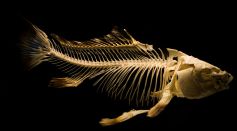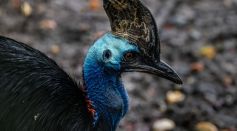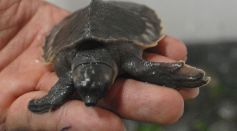ENVIRONMENT & CLIMATE

Animal Remains, Stone Tools Reveal How Neanderthals Open Landscapes in Germany

'Postcards from a World on Fire': A Collection of Articles Unveils Images of a Coming Apocalypse Brought by Climate Change

Hummingbirds Found with Unique Strategy to Overcome Conditions During Migration

Mystery Disease Kills Almost 100 Individuals; WHO Launches Investigation to Identify Unexplained Illness

Who Is Svante Arrhenius? Swedish Scientist Predicted Climate Change Would Be A Global Problem

Ancient Big-Headed Fish May Be the Key to Evolution, Brain Scans Show They Left Water to Invade Land

Ocean Salinity: Seawater is Less Salty Today Than First 500 Million Years of Earth

AI Can Improve Lightning Forecast to Enhance Safety Warnings, Create Accurate Long-Range Climate Models

Climate Change: Thwaites Glacier Ice Shelf In Antarctica Could Break In 5 Years Result In Sea Level Rise, Scientists Warn

Odd-Fish Sounds Recorded 3 Years After Massive Construction of Coral Reef Decoded, What Did Scientists Discover?

Kentucky Tornado Outbreak Took Lives, Destroyed Homes: What Makes A Tornado So Strong and Destructive?

Tornado Aftermath: US Emergency Official Warns More Powerful, Destructive, Deadlier Storm will be the New Normal

Archeology: Ancient Humans Farmed Vicious Cassowaries, Thousands of Years Before Raising Chickens

5-Million-Year-Old Fossil of a Pig-Nosed Turtle That Can Survive Both in Freshwater and Seawater Discovered
Most Popular

Universe Origin Revealed: Exploring the Latest Big Bang Science Theories and Discoveries

Big Bang Physics and Cosmology: Can Science Really Explain the Origins of the Universe?

Space Tourism Future: How Commercial Space Travel Will Transform Civilian Exploration

How Space Observation and the Solar Light Spectrum Make the Sun Look Different in Space Than on Earth

![[WATCH] Why Was a Risso's Dolphin Performing an Unusual Headstand Underwater and Rotating Slowly?](https://d.sciencetimes.com/en/full/37503/watch-why-was-rissos-dolphin-performing-unusual-headstand-underwater-rotating-slowly.jpg?w=547&h=341&f=405442cf3d8b89399b4fef55e166b7ba)



